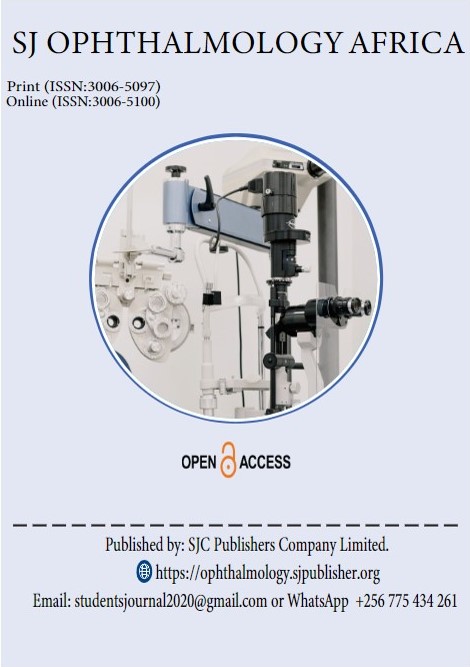OCCUPATIONAL AND ENVIRONMENTAL FACTORS ASSOCIATED WITH OCULAR TRAUMA AMONG PATIENTS ATTENDING EYE CARE SERVICES AT JINJA REGIONAL REFERRAL HOSPITAL. A CROSS-SECTIONAL STUDY.
DOI:
https://doi.org/10.51168/ab09v081Keywords:
Ocular trauma, Health education, Non-therapeutic drugsAbstract
Background
Ocular trauma refers to any injury to the eyeball, its adnexa, orbit, and periorbital structures due to direct contact with fixed or mobile, blunt or sharp objects. The study aims to assess the factors associated with ocular trauma among patients attending eye care services at Jinja Regional Referral Hospital.
Methodology
A cross-sectional descriptive study design that collected quantitative data from 100 respondents using a non-probability consecutive sampling process from September 2022 to March 2023.
Results
70% of the respondents were male while 30% were females. 55% of the respondents were 21-40 years, 32% were 0-20 years, 10% were 41-60 years and 3% were >60 years. Ocular injuries were caused by a foreign body (40%) followed by work-related activities with 20%, accidents with 18%, assault-related actions with 20%, and the least were chemical injuries with 5%. (65%) didn’t have eye protective equipment while 35% had. 40% of the respondents knew about awareness programs on ocular trauma while 60% had not received these programs. (43%) obtained trauma from the workplace, 25% from bars, 17% from homes, and 15% from schools. 55% had used nontherapeutic drugs like alcohol. 50% were using water from protected streams, 30% were using water from taps, 15% were using water from wells and the least were those using water from rivers (05%).
Conclusion
The most affected age group was 21-40. Males were more affected than females. Literates were most affected, and most cases of ocular trauma were obtained from the workplace.
Ocular trauma was associated with the use of non-therapeutic drugs like alcohol.
Recommendations
Health education on ocular injuries should be adopted by the relevant authorities to increase awareness of the dangers, causes, predisposing factors, and burden of ocular trauma in the community.
Downloads
Published
Issue
Section
License
Copyright (c) 2024 David Ssekajigo, Adonia Kyakulaga (Author)

This work is licensed under a Creative Commons Attribution-NonCommercial-NoDerivatives 4.0 International License.

